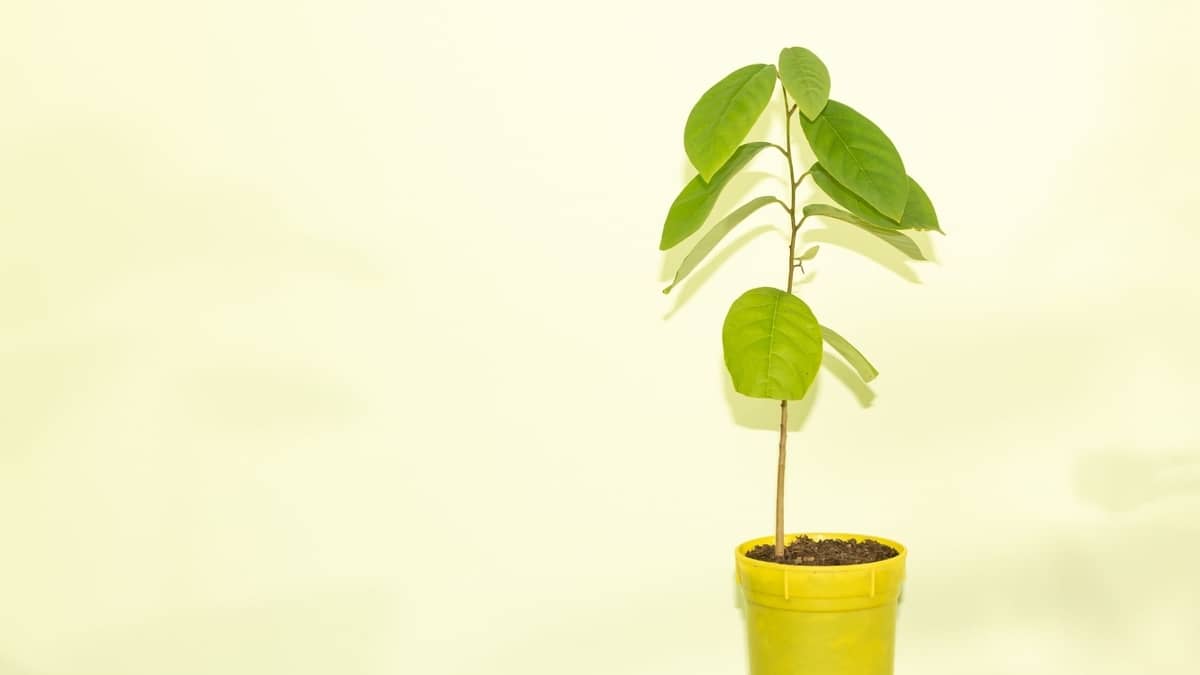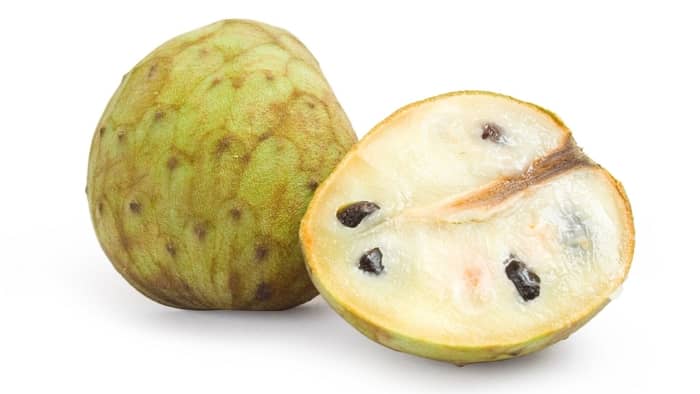Last Updated on September 16, 2022 by Griselda M.
If you are a fan of custard apples or cherimoya, it’s best to learn how to grow a cherimoya tree from seed so that you can enjoy this fruit for many years to come.
Cherimoya is a large tropical fruit that grows in tropical and subtropical regions. One of the most common places it grows is the island of Santa Catalina; off the coast of southern California. The fruits have a greenish-yellow color and weigh about 8 ounces.
They are a sweet fruit with a creamy texture. Cherimoya trees are very hardy plants and will thrive in most climates. They do not require much maintenance and grow rapidly.
It takes about 2-5 years to reach maturity and fruits can be produced for many years thereafter. The fruit is harvested when it reaches a size of about 6 inches in diameter. You can tell when it’s ripe by pressing on the fruit with your thumb and feeling the fruit give slightly.
Once you harvest the cherimoya, you should keep the fruit in a paper bag to protect it from insects. You can store it in the refrigerator for several weeks and use it as you would use any other fruit. Let’s dive into the nitty-gritty of how to grow a cherimoya tree from seed.
How to Grow a Cherimoya Tree From Seed?
The first thing you need to know when learning how to grow a cherimoya tree from seed is that cherimoya trees are tropical plants that prefer warm temperatures. They will not grow well in areas that are too cold. They like temperatures around 70 degrees Fahrenheit, but will tolerate a little less and are quite hardy.
The most important thing to remember when growing cherimoya trees is to give them plenty of water. You should water the tree around once every two weeks and allow the soil to dry out between waterings.
You should also fertilize your cherimoya trees every three months with a balanced fertilizer. This will help your tree grow strong and healthy. You should fertilize your cherimoya trees when they begin to show new growth, which can be up to six weeks after you plant them.
Step 1: Choose a location for your tree
Cherimoya trees do not like extreme cold, so it is best to choose a location that is in an area that stays warm all year round.
Step 2: Start your seeds
Your seeds should be quality, you can get them from a nursery, online store, or a garden supplies shop. Start them in rich fertile soil and allow them approximately 3 to 5 weeks to germinate. Once they germinate, give them several more weeks about 5 or 6 weeks to grow strong before transplanting them.
Step 3: Planting your seedlings
When planting cherimoyas it is recommended that you plant in a sunny location and keep the soil moist.
Step 4: Water your plants regularly
It is recommended that you water your plants every two weeks to ensure they get enough moisture. If you notice that the soil in your pots is dry then add more water.
Step 5: Feed your plants
Make sure that you feed your plants every three months. You should use the correct type of fertilizer for your plants.
Step 6: Keep an eye on your plants
You should check on your plants every day to ensure that there are no pests or diseases.
Caring For a Growing Cherimoya Tree
How to grow a cherimoya tree from seed is straightforward – it grows from seed and needs full sun and well-drained soil to grow. It has long, pointed leaves with three leaflets that turn green in the fall. The tree has dark green, leathery leaves on the branches and fruits that look like green apples or pears. To get perfect fruits from this tree, you will need to care for the tree. The care includes:
Watering the tree
Cherimoya trees need to be watered often, especially during the dry months of the year. If there is a drought, the tree should be watered by hand and the excess water should be allowed to drip off the leaves and branches. If there are no excess drops, it means the tree is getting enough water.
The watering schedule will depend on the size of the tree. You should water the tree at least every two weeks in the summer and every three weeks in the winter. You can also water the tree less frequently if it is in an area with consistent rainfall.
Fertilizing the tree
Cherimoya trees need fertilizer during the growing season. There are two different types of fertilizers that you can use on cherimoya trees: organic and synthetic. Organic fertilizers are made from natural substances that are beneficial to plants and are usually not harmful to animals and people.
Pruning the tree
Pruning cherimoya trees is optional, but it can help the tree grow healthier and stronger. Pruning the cherimoya trees helps remove dead branches, leaves, and other parts that may be obstructive to the growth of the tree. The pruning should be done when the tree is young and growing.
Protecting the tree from insects and treating the tree for diseases
Insects and disease are two common problems that affect cherimoya trees. You will need to protect your cherimoya tree from insects and diseases by using the proper insecticides and fungicides.
Take Home
How to grow a cherimoya tree from seed requires some work but it’s possible to do it if you are a determined gardener. Cherimoyas can be grown in most parts of the world where it is warm and not too cold. For this reason, it can be a good option for a tropical climate.
Read more about How To Grow A Mimosa Tree Indoors?
Frequently Asked Questions
How Long Does it Take to Grow Cherimoya From Seed?
It takes about 3 to 5 years old for the fruit to mature. As the tree gets older, the more fruits it yields. Propagating cherimoya from seeds is the easiest way to grow your own cherimoya tree. You can buy cherimoya seeds from a nursery.
How Long Does it Take For a Cherimoya Tree to Bear Fruit?
The first time you plant cherimoya, you should wait around 3-5 years before expecting cherimoya to produce fruit.
How Do You Propagate Cherimoya Trees?
Cherimoya can be propagated through seeds, cuttings and grafting. For more information on how to grow a cherimoya tree from seed, read the article above.
Does Cherimoya Need Full Sun?
Cherimoya needs full sun for healthy growth. If your climate has a lot of sunlight and your cherimoya begins to burn, you may want to move it to a partially shaded location.

